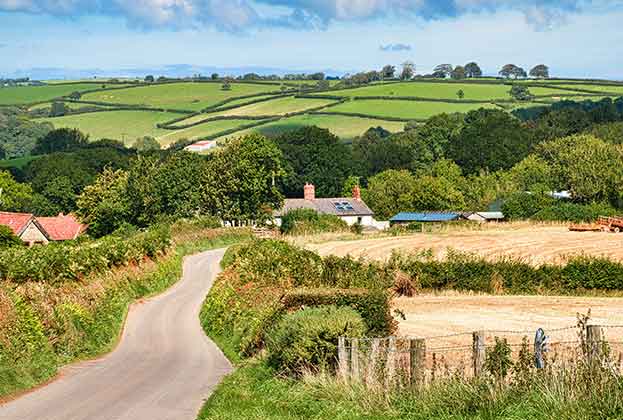The strong housing market and a shortage of supply boosts land value
New build development in the South West peninsula has consistently averaged around 1.0% of existing stock per annum over the last five years, in line with the England average and suggesting a healthy market. But the distribution of delivery has not been uniform. 3,250 new homes have been built in Mid Devon between 2016–2021, equivalent to 1.8% of existing stock. In contrast, the rate of development in Torbay, Torridge and Exeter over the same period has been under 0.7% of existing stock. North Devon has led the way, delivering 175% of need over the last three years, followed by the regional cities of Plymouth and Exeter both delivering 155% respectively. However, Teignbridge, Somerset West and Taunton, and Torbay have failed to meet need in the last three years, delivering between 75–86%.
Planning Policy and Future Land Supply
Local plan coverage is broadly up to date, apart from four local planning authorities (LPAs) in the east of the peninsula. The LPAs without a post-NPPF plan are also those which are less able to demonstrate a five-year housing land supply. Exeter published a land supply statement of just under five years in August 2022. Somerset West and Taunton only just passes the threshold with a published land supply of 5.4 years, although this does not account for the 10% buffer required under the latest Housing Delivery Test.
Local Plan coverage
These LPAs are likely to present the best opportunity to bring immediate sites forward outside of the local plan process, with the presumption in favour of sustainable development applying. For longer-term opportunities, several LPAs are required to review their local plans; Cornwall became due for review at the end of 2021, and North Devon and Torridge will need to begin the process in 2023.
Constraints and opportunities
One of the most pressing difficulties in increasing land supply is the issue of nutrient neutrality, which is affecting sites within the River Camel, River Axe, and Somerset Levels catchment. The local planning authorities in this area have been advised by Natural England that permission cannot be legally granted for developments that are not nitrate and phosphate neutral.
As a consequence, the number of homes receiving full planning permission in the affected areas has fallen by 43% over the last three years. Over 270 schemes have been in planning without being determined for over a year, contributing to the lack of land in the development pipeline. Until mitigation schemes can be put in place in conjunction with rural landowners, nutrient neutrality will pose a significant obstacle to meeting housing need and supporting economic growth in the South West Peninsula.
Despite this restriction, the South West will be the beneficiary of significant government investment in the coming years that could unlock development opportunities. Exeter, North Devon, South Hams and Teignbridge are in category 1 of the Levelling Up Fund Index, meaning they are in the highest priority for government intervention. But opportunities will not be limited to only Tier 1 areas; Plymouth received £19 million in the first round of Levelling Up Fund allocations, and significant grant has been given to Torbay and Cornwall from the Towns Fund. Further support is expected to develop the Plymouth and South Devon Freeport, which aims to develop the manufacturing, marine and defence industries already present in the region.
Land values and demand
The combination of a strong housing market and barriers to bringing land forward for development has led to an exceptionally strong development land market. Greenfield land values in the Savills Development Land Index in the west have risen by 10% in the year to September 2022, outperforming the UK average. Brownfield values were increasing at the fastest rate of any UK region in the year to March 2022, but have remained flat in the last two quarters. Values across the South West peninsula are now at their highest point since the global financial crisis, -9% below their 2007 peak. Urban land values are just -6% below their previous peak.
Development land values are highest in the area around Exeter. The market here benefits from strong housing demand due to high levels of historic undersupply, and from competing demand from other uses, particularly logistics. Greenfield values around Exeter grew by 20% in the last year. Between June 2018 and March 2020, growth in the same area was only 2.8%, highlighting the exceptional strength of the current market. Further west, Truro has seen 15% growth in the last still, a figure that is still well above the regional average.
13% of current residential allocations across the peninsula are in areas affected by nutrient neutrality, further limiting the availability of land for development. The problem is most acute in Somerset West and South Somerset. Therefore, although rising build costs, falling house prices and the increase in the cost of borrowing will exert downward pressure on land values, the shortage of supply means we anticipate there will still be strong competition for unconstrained, well-located sites. Appetite is highest for oven-ready sites with a capacity for 100–200 homes.
Read the articles within Spotlight: The South West Peninsula below.
.jpg)
